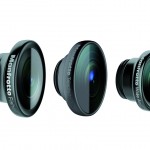Street Photography

About Jack Hollingsworth
Jack Hollingsworth, a denizen of Austin, TX, is an award-winning, 30-year career veteran in commercial photography. Jack has fallen in love with his iPhone camera as his primary capture tool. He is also an avid Camera+ devotee and has been since day one. He deeply believes that, when all is said and done, the iPhone may just be remembered as the most influential capture device ever in the history of photography.
Let’s talk about street photography for a minute. It’s a crazy popular genre for mobile photographers… and for good reason: the phone itself, as a camera, is so small and unassuming. And the photographer seems to blend in as he/she moves through the rhythms, rituals and routines of the streets they are covering.
Street photography, for the most part, is focused on shooting candids of people in public spaces and places. Being a career travel and lifestyle photographer myself, I have shot literally thousands of hours on the streets, avenues and byways across the globe. I like to think of street photography as, more or less, a subset of ‘urban photography’ (people, places and things).
For the purposes of this post, I’m specifically talking about street portraiture. Not ‘found’ or documentary journalism per se, but subjects and scenes that I set up to capture just the right emotion I intended to catch. This type of set-up street portraiture isn’t for everyone. It happens to suit my particular temperament and career experiences. I am quite used to ‘making’ photos, and not just ‘taking’ them. ?
The downside, from my point of view, is that this type of intentional set-up can be challenging when wanting to preserve the ‘moment’. It is hard, at times, to keep the shot looking real and authentic without looking staged and stiff.
In the mobile space, street photography is a delicate balance of content and context. It requires putting on your portrait ‘game face’ and going about your work with undivided attention, preparation and purpose. For those of you willing to try this type of street portraiture, here’s a few guideline tips to get you one your way:
Honor, Love, and Respect
You’ll rarely, if ever, see me sneaking around trying to snag candid shots of people on the street. Feels a little ‘stalkerish’ to me. I always ask permission from the subject I’m shooting. I also work at keeping eye contact with that person so they can ‘know’ my intentions. I smile and am respectful of their curiosity and willingness and (occasional unwillingness) to have me shoot them.
Want to be a better photographer? Than be a better human being. It matters. And it makes a difference.
Accessibility and Approachability
One of the coolest things I’ve recently noticed about shooting mobile street portraiture is both the accessibility and approachability the iPhone camera gives you. It’s incredible. I am now approachable, in a very different way, than I was when I had my DSLR, my camera bag and all the gear that entailed. This also goes for the ability to shoot in a much wider range of locations. Quite transformative.



Finding the Right Background
Let’s face it. The street is a busy place. There’s a lot going on visually. And oftentimes, ‘busy’ is our enemy for shooting portraits in general. It is not uncommon for me to first find a simple, non-competing background where I want my subject to be. Then I patiently wait for just the right and willing subject to come along. My goal is always to combine the perfect background with the perfect subject and… voila!



Fear of Rejection and Connection
This is a biggie for most people. Most photographers are terrified of rejection. I know that sounds crazy, but it’s true. This fear often robs us of our creative impulses and we can miss a great opportunity for beautiful and unique street photography for fear of rejection. After years of learning this, I have overcome that fear and am grateful every time I take the leap and make it happen. You can too!
The flip side can also be true. It is the fear of connection. In other words, what do I do if the subject says ‘yes’? ?
My words to you would be… relax. Take a deep breath. It really isn’t hard. Most people are deeply flattered that you wish to take their photo. Exercise some gumption. As you become more confident and direct in your approach, you will find you get many more saying ‘yes’ than ‘no’. Soon, your timidity and insecurity will fly away. Be proud. Be personal. Be confident (but not arrogant). Be emotive. Be genuine. Be conversational. You’ll be amazed.
Focus On the Eyes
As in almost all portraiture, you want your focus point to be right on the eyes (or the eye closest to the camera if your subject is angled). That means, as shown below, putting your focus reticle on the eye. Additionally, you’ll want to place your exposure reticle on the brightest part of the person’s skin tone.








Desaturation
I think ‘desaturation’ is more of a personal aesthetic for me than a general mantra about street photography, but I do like camera apps that offer intensity control sliders so that I have the option of adjusting the strength of the effect. Here are a couple of examples of how I achieve a ‘desaturated’ portrait look using popular Camera+ filters and sliders:










Match Your Personality To Your Process
This may sound quite obvious, but the reality is to be a really good ‘people photographer’ you need to be a ‘people person’. To put it in simple terms, if, by nature, you are generally shy and a bit introverted or perhaps awkward around strangers, you might be better suited for candid shots (where you don’t have to ask permission). If you are gregarious, like attention, and are easy and comfortable with strangers, setting up these kinds of shots will come easier and you will flourish at it over time.
Bottom line is you have to be honest about what makes you tick – what makes you click ?. Don’t try to be someone you’re not.
Chimping and Chumping
‘Chimping’ is the vernacular for your subject running to the camera after every shot in order to see how they look. Best to discourage this right upfront. It can become very time consuming and antithetical to the creative shooting process.
On the other hand, ‘chumping’ is a photographer challenge (not a subject challenge) that involves having the ‘need’ to show the person you’re shooting every shot you take. All I can say here is avoid both extremes. No chimping and no chumping. My only exception to this rule is, after I’m through shooting, and I feel that I have taken the shot I envisioned (and if the model has been cooperative and friendly), I might show them what I consider to be the best shot in my camera roll. I sometimes, on special occasions, if I feel the shot is exceptional, I will email or text the shot to them, right on the spot!
Looking Like a Photographer
There are many occasions, while shooting on the street, that I want to blend in, not stand out – be incognito. But there are other times (and street portraiture can be one of those times) where I want to indeed look like a photographer. This might mean ‘looking the part’ by carrying business cards, directing the subjects, and overall coming across as a professional, competent, experienced, confident photographers. Know what you are going to shoot, shoot it and move on. No fumbling with camera controls.
Presets: Common Fixes
Not all camera replacement apps have built-in one-touch presets for correcting common exposure and color balance problems. Camera+ does…16 presets to be exact. These are fantastic for those that prefer and enjoy a ‘no fuss, no muss’ approach to portrait editing.
Here are a few of my favorite presets in the Camera+ suite:




Monochrome
Is there anything more inspiring and intriguing than monochromatic portraits? ‘Monochromatic’ means one color or shades of one color. Popular monochromatic treatments include B&W, sepia, and cyanotype. Monochromatic portraits seem to be more subtle and interpretive and less documentary than the full color counterpart. One thing is certain: they are hip, cool and contemporary. Chances are pretty good that you’ll get a lot of ‘oohhhs’ and ‘aahhhs’ as you show off your monochromatic portrait treatments.





Attachment Lenses for Portraits
The iPhone 5s (the one I own and use) is an 8-megapixel 1/3 inch sensor with a 5-element 30mm (42mm for video) equivalent f2.2 lens. Photographers know well that a 30mm equivalent lens (what you get with the iPhone 5s) is technically a ‘wide angle’ lens with an approximate 60˚ ‘field of view’. With wide-angle lenses, you don’t want to get too close to the subject’s face and risk facial feature exaggeration. So, to get close, you have one of several options. One option is to crop in post-production software (iPhone photo files are plenty big to do some minimum cropping). Another option is to attach a 2x lens to the phone itself, which effectively doubles the focal length (to 60mm) and halves the field of view (30˚).
Here are three favorite 2x attachment lenses that I have used, all with surprisingly good results:
Featured Posts
-
 Camera+ 10 arrives with full depth support, HEIF, accurate viewfinder and smiles!
by Pedro Cuenca
Camera+ 10 arrives with full depth support, HEIF, accurate viewfinder and smiles!
by Pedro Cuenca
-
 A Beginners Guide for Manual Controls in iPhone Photography: ISO
by Jack Hollingsworth
A Beginners Guide for Manual Controls in iPhone Photography: ISO
by Jack Hollingsworth
-
 A Beginners Guide for Manual Controls in iPhone Photography: Shutter Speed
by Jack Hollingsworth
A Beginners Guide for Manual Controls in iPhone Photography: Shutter Speed
by Jack Hollingsworth
-
 How To Shoot Close-Up and Macro Photography With Your iPhone
by Jack Hollingsworth
How To Shoot Close-Up and Macro Photography With Your iPhone
by Jack Hollingsworth


